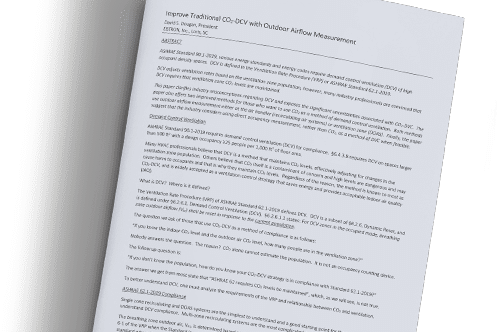Improve Traditional CO2-DVC with Outdoor Airflow Measurement

This paper clarifies industry misconceptions regarding DVC and exposes the significant uncertainties associated with CO2-DVC. Additionally, the paper proposes two improved methods for using CO2 for demand control ventilation. Both ways use outdoor airflow measurement either at the air handler (recirculating air systems) or ventilation zone (DOAS). Last are recommendations for direct occupancy measurement for DVC rather than CO2.


